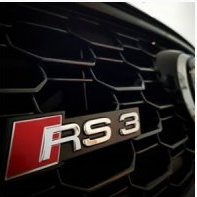R34 25GT vs R33 GTS-T M-SPEC SERIES II
Announcements
-
Similar Content
-
Latest Posts
-
Yeah, all the crude is used for fuels and petrochem feedstocks (pesticides, many other chemicals, etc etc). But increasingly over the last few decades, much of the petrochem synthessis has started with methane because NG has been cheaper than oil, cleaner and easier and more consistent to work with, etc etc etc. So it's really had to say what the fraction either way is. Suffice to say - the direct fuels fraction is not insigificant. Heavy transport uses excruciatingly large amounts. Diesel is wasted in jet heaters in North American garages and workshops, thrown down drill holes in quarries, pissed all over the wall to provide electricity to certain outback communities, etc etc. Obviously road transport, and our pet project, recreational consumption camouflaged as road transport, is a smaller fraction of the total liquid HC consumption again. If you're talking aboust Aussie cars' contribution to the absolute total CO2 production of the country, then of course our share of the cubic mile of coal that is used for power generation, metallurgy, etc adds up to a big chunk. Then there is the consumption of timber. Did you know that the production of silicon metal, for example, is done in Australia by using hardwood? And f**king lots and lots and lots of hardwood at that. Until recently, it was f**king jarrah! There are many such sneaky contributors to CO2 production in industry and farming. NG is used in massive quantities in Australia, for power gen, for running huge water pumps (like, 1-2MW sized caterpillar V16 engines running flat out pumping water) for places like mine sites and minerals/metals refineries. And there are just a huge number of those sort of things going on quietly in the background. So NG use is a big fraction of total CO2 production here. I mean, shit, I personally design burners that are used in furnaces here in Oz that use multiple MW of gas all day every day. The largest such that I've done (not here in Oz) was rated to 150MW. One. Single. Gas burner. In a cement clinker kiln. There are thousands of such things out there in the world. There are double digits of them just here in Oz. (OK< just barely double digits now that a lot of them have shut - and they are all <100MW). But it's all the same to me. People in the car world (like this forum's users) would like to think that you only have to create an industrial capability to replace the fuel that they will be using in 10 years time, and imagine that everyone else will be driving EVs. And while the latter part of that is largely true, the liquid HC fuel industry as a whole is so much more massive than the bit used for cars, that there will be no commercial pressure to produce "renewable" "synthetic" fuels just for cars, when 100x that much would still be being burnt straight from the well. You have to replace it all, or you're not doing what is required. And then you get back to my massive numbers. People don't handle massive numbers at all well. Once you get past about 7 or 8 zeros, it becomes meaningless for most people.
-
@GTSBoy out of the cubic mile of crude oil we burn each year, I wonder how much of that is actually used for providing petrol and diesel. From memory the figure for cars in Australia, is that they only add up to about 2 to 3% of our CO2 production. Which means something else here is burning a shit tonne of stuff to make CO2, and we're not really straight up burning oil everywhere, so our CO2 production is coming from elsewhere too. Also we should totally just run thermal energy from deep in the ground. That way we can start to cool the inside of the planet and reverse global warming (PS, this last paragraph is a total piss take)
-
By TurboTapin · Posted
As somebody who works in the energy sector and lives in a subzero climate, i'm convinced EV's will never be the bulk of our transport. EV battery and vehicle companies over here have been going bankrupt on a weekly basis the last year. -
By Dose Pipe Sutututu · Posted
With all the rust on those R32s, how can it even support all the extra weight requirements. Probably end up handling as well as a 1990s Ford Falcon Taxi. -
Yes...but look at the numbers. There is a tiny tiny fraction of the number of Joules available, compared to what is used/needed. Just because things are "possible" doesn't make them meaningful.
-







Recommended Posts
Create an account or sign in to comment
You need to be a member in order to leave a comment
Create an account
Sign up for a new account in our community. It's easy!
Register a new accountSign in
Already have an account? Sign in here.
Sign In Now